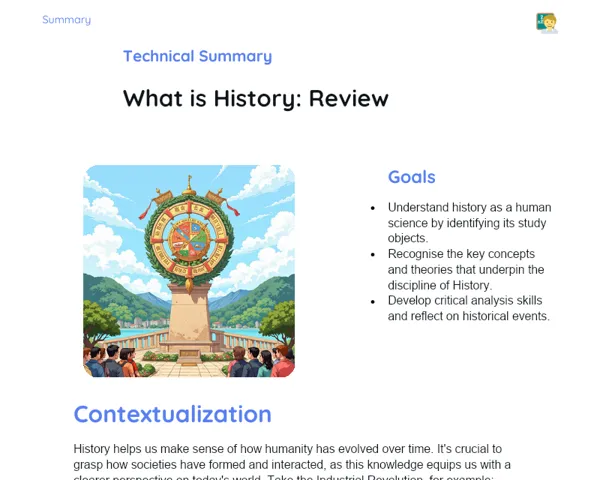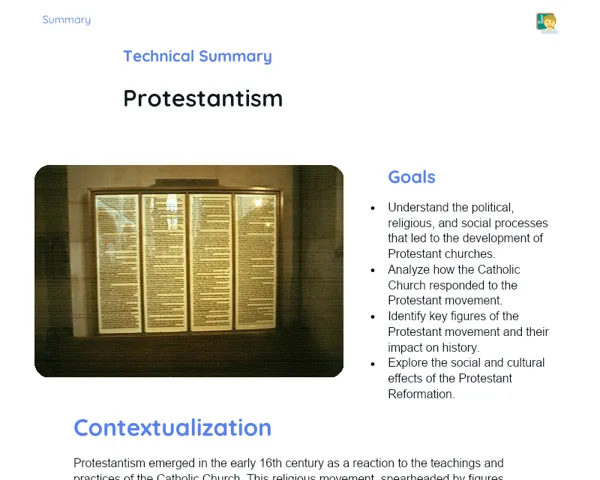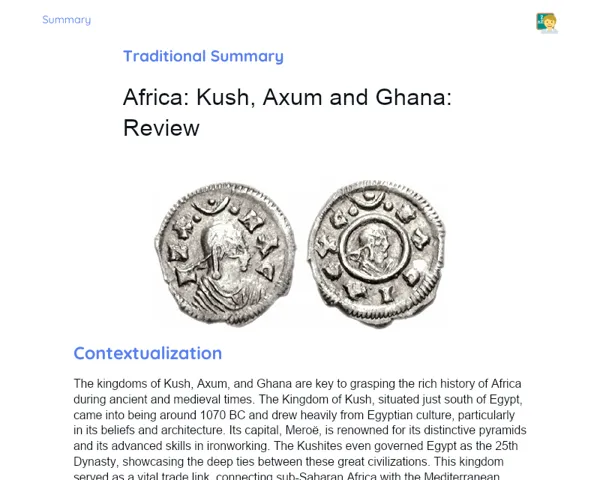Socioemotional Summary Conclusion
Goals
1. Understand the historical background that led to the outbreak of World War I.
2. Identify the main conflicts and alliances formed before and during World War I.
3. Analyze the impact of World War I in the post-war period and its socioeconomic and political consequences.
Contextualization
🇿🇦 Did you know that World War I was not only about the horrific battles but also filled with intense emotions like fear, distrust, and hope? These feelings played a significant role in the decisions that changed the course of history! Let's delve into how these emotions influenced the world then and learn how we can apply these insights to make more thoughtful and wise choices today. 🌍✨
Exercising Your Knowledge
Historical Context of the Late 19th and Early 20th Century
The late 1800s and early 1900s were periods rife with political and social upheaval, characterised by imperialism, nationalism, and competition among European powers. The scramble for colonies and resources, along with a surge in national pride, created an atmosphere of tension and distrust that eventually spiralled into war. This context is essential for grasping the intricate background that precipitated World War I.
-
🌍 Imperialism: The race for colonies led to fierce rivalries among European nations, all vying to expand their power and influence.
-
🇿🇦 Heightened Nationalism: Strong beliefs in national superiority and the glorification of one’s own culture fostered animosity among nations.
-
🤝 Rivalries Among Powers: The struggle for dominance among countries like Germany, France, the UK, and Russia generated a constant atmosphere of distrust and tension.
Alliance System
In the early 1900s, major European powers established defensive alliances to bolster their security and deter potential aggression. Two significant alliances formed: the Triple Alliance (Germany, Austria-Hungary, Italy) and the Triple Entente (France, Russia, UK). While these alliances aimed to maintain stability in international relations, they ultimately set the stage for any local squabble to escalate into a worldwide conflict.
-
🛡️ Triple Alliance: This coalition of Germany, Austria-Hungary, and Italy sought to ensure mutual protection against attacks from rival powers.
-
⚔️ Triple Entente: Formed by France, Russia, and the UK, this alliance was a response to the growing threat posed by the Triple Alliance.
-
🌐 Domino Effect: The existence of these alliances meant that any conflict involving a member could rapidly draw in others, turning a local dispute into a global confrontation.
Pre-War Crises
A series of crises preceded World War I, heightening tensions among European powers. Events like the Moroccan Crises, the Balkan Wars, and the Bosnian Crisis brought existing rivalries to the fore, igniting distrust and escalating the situation leading up to 1914.
-
⚠️ Moroccan Crisis (1905 and 1911): Clashes between Germany and France over Morocco control intensified tensions within their alliances.
-
⚔️ Balkan Wars (1912-1913): Conflicts in the Balkans involving nations like Serbia and Austria-Hungary added to regional instability.
-
📅 Bosnian Crisis (1908-1909): Austria-Hungary's annexation of Bosnia ruffled feathers with Serbia and Russia, raising frictions that set the stage for war.
Key Terms
-
Imperialism: A policy aimed at territorial expansion and dominance over other nations.
-
Nationalism: A strong sense of pride and devotion to one’s nation, often fostering a belief in national superiority.
-
Triple Alliance: A military alliance forged by Germany, Austria-Hungary, and Italy.
-
Triple Entente: A military alliance formed by France, Russia, and the UK.
-
Moroccan Crisis: Diplomatic conflicts over control of Morocco between Germany and France.
-
Balkan Wars: Series of conflicts leading up to World War I in the Balkans.
-
Bosnian Crisis: The annexing of Bosnia by Austria-Hungary, straining relations with Serbia and Russia.
For Reflection
-
🤔 How did the emotions of fear and distrust among nations play a role in escalating the conflict that led to World War I?
-
🌿 In what ways could alternative political choices have averted the war? What lessons does this offer us about the role of emotions in political decision-making?
-
💬 How can we apply the lessons from World War I to foster a culture of peace and empathy in our own lives and communities?
Important Conclusions
-
Understanding the historical context surrounding the outbreak of World War I sheds light on how rivalries and alliances can develop into global crises.
-
Recognising the key conflicts and alliances that emerged before and during World War I is vital for comprehending how political and emotional factors shape historical events.
-
Examining World War I's aftermath reveals profound socioeconomic and political impacts that shaped the 20th century and continue to influence our lives today.
Impacts on Society
World War I had a lasting impact on global society, reshaping borders, economies, and social structures. Its legacy, characterised by economic hardship and the emergence of new political regimes, continues to echo in today's politics. The missteps and rash decisions made by leaders during this period highlight the importance of approaching conflicts with empathy and a thoughtful understanding of emotions.
In our everyday lives, the emotions of fear, distrust, and nationalism that fuelled World War I can still be observed in current political discussions and international relations. Acknowledging these sentiments helps us manage our own feelings, paving the way for more balanced decisions and a peaceful society. Reflecting on these historical lessons inspires us to engage responsibly and empathetically within our own communities.
Dealing with Emotions
Let’s use the RULER method to better manage our emotions while studying World War I. First, identify the emotions you feel when diving into such intense events. Next, grasp the reasons behind these feelings and how they might affect your learning and interactions. Correctly name your emotions: are you feeling fear, curiosity, distrust, or empathy? Share these feelings with classmates or jot them down. Lastly, regulate these emotions through practices like mindfulness or reflective discussions, ensuring a healthier, more balanced learning environment.
Study Tips
-
🌐 Use online resources, such as documentaries and articles, to enrich your understanding of World War I’s background and see how events unfolded.
-
🗣️ Engage in debates and discussions with peers to explore various perspectives and gain insight into the emotions and decisions of historical leaders.
-
📅 Set SMART goals (Specific, Measurable, Achievable, Relevant, Time-bound) to structure your study time and ensure you’re covering all critical aspects of the topic.



